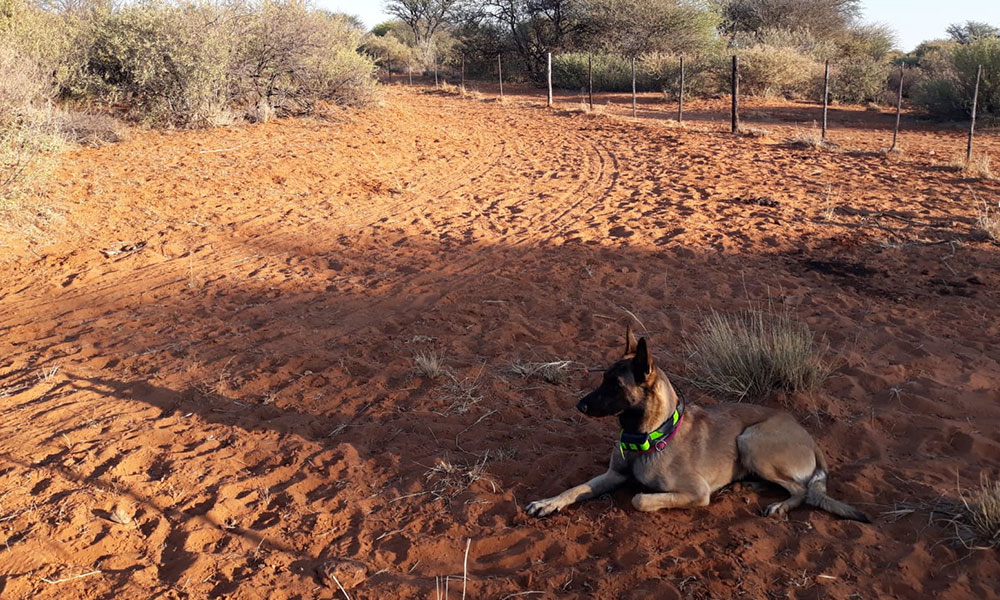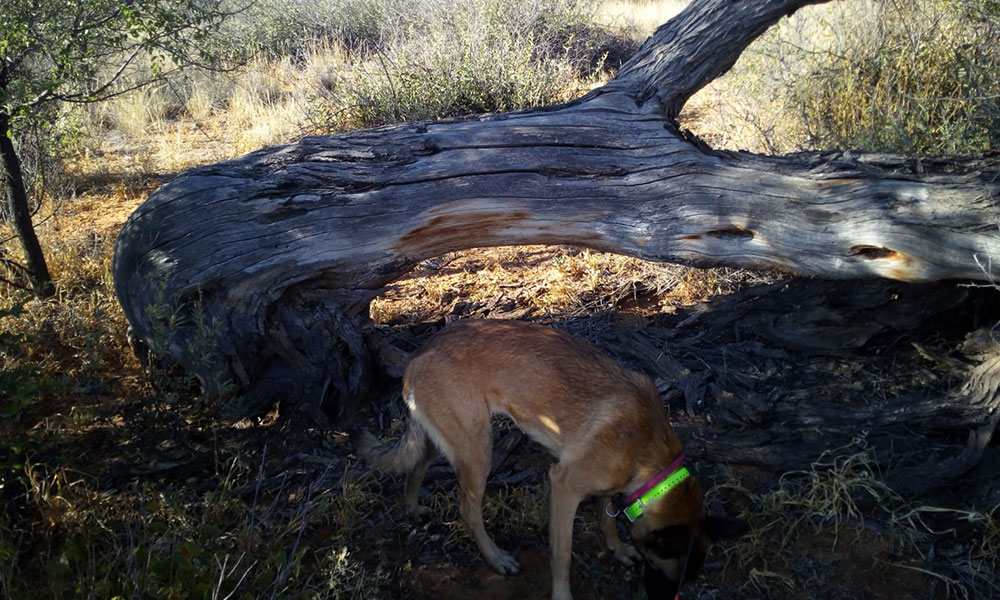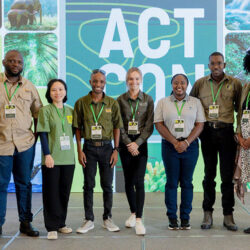Who Thought Picking up Poops Could be Fun
-

- by Z. Lerner July 16, 2019

I am a half American half Polish high school graduate that will be attending North Seattle Community College and planning on majoring in Environmental Science. I grew up in Strasbourg, France and moved to Galveston, Texas during my sophomore year of high school. I have always loved animals and nature, backpacking from a young age across the globe with my mother the focal point of every trip being wildlife.
I came to CCF after finishing high school early by taking online classes during my last semester. I heard of CCF thanks to Dr. Markers European Tour which passed through my hometown in France. Once accepted and arrived at the center near Otjiwarongo, I began to try and learn as much as possible from the multitude of departments CCF has. One of the departments that intrigued and satisfied my curiosity was the Scat Detection Dog Department led by Tim Hofmann. I had always considered myself a dog person but had never gotten the opportunity to ever be in contact with a working dog. At first I knew nothing about the various uses of working dogs but, after a lot of questioning I had absorbed an immense amount of knowledge from the dog handler. After some time I became the Scat dog intern and found out that we’d be going on a weeklong trip to the Gobabis region. This is an area where the fate of cheetah survival will be decided. This is why CCF has many outreach trips to that region with the veterinary department, the human wildlife conflict department and the scat dog department. This was also CCF’s young scat dog Enya first farm visit trip. This meant that we had to push her to her limits to be able to see what her limits are before she was taken on a 3 week trip to Angola.


Our week away starting with a 5 hour drive to Gobabis. Once arrived we went to meet Dr. Hanlie Winterbach. She is in charge of the human wildlife conflict resolution in the Gobabis region. She gave us the information about the 3 farms we were going to be staying at and showed us the future Gobabis CCF office. We arrived at our first farm at 4pm. We set up our camp and went on our first search. Our first transect was a perimeter fence line. In the middle of the search the farmers little Jack Russell crawled underneath the fence and joined us. Even though Enya and the farmers dog Sky played a lot throughout the search, Enya was still able to locate predator scats. We found some extremely fresh leopard scat and a good amount of jackal scat as well. I also got to see my first red lechwe antelope which is not found in CCF’s reserve. After the search I cooked us some dinner and we went to bed ready for the next day’s early search. We were up before sundown and started the next day’s transect at 7. This time we were going to be walking through the middle of the farm. After the search we had breakfast and entered the GPS data into the computer. Throughout the day when it was hot, Enya and we would be resting in the shade waiting for the biting sun to go down. As soon as it cooled down a little bit we went to our afternoon search. This time we would be walking to a pan that the farm had. Once arrived we were greeted by all the game that is on the farm. There were 2 beautiful willows by the waterhole that made the place absolutely stunning. Enya even got to play in the water for a bit but knew that more work had to be done. After the search we ate dinner and went to sleep. We did another search in the morning and then dismantled our camp and left the first farm at 12. We arrived at the second farm. The farmer was a professional hunter who knew his land extremely well. He showed us a play tree that used to be active 4 years ago but that burned down during a bush fire. Much to everyone’s surprise we found fresh scratch marks on the tree. We set up camp by a waterhole and went on our first transect. We were walking the perimeter of one of the camps and also walking into the bush whenever we saw a potential play tree. The search reached its peak while walking back to the road from the bush, Enya ran to a normal looking tree and indicated on some scat. She had found some potential cheetah scat. We were ecstatic. This was a perfect example of why a scat detection dog is a valuable tool to have. We would have never stopped at that tree or even looked at that scat if it weren’t for the dog.
Throughout the rest of the trip we would do 2 searches daily and also some searches in which we drove looking for potential play-trees, stopping there and letting the dog search the area around the tree. I had an amazing time during this outreach trip. It was an experience that I will never forget and that I am grateful for being able to take part in. It helped me experience first-hand fieldwork and learn more about the Namibian private farms.

Related Reading
-
August 27, 2025
Sniffing Out Stories with the Scat Detection Dog Team




